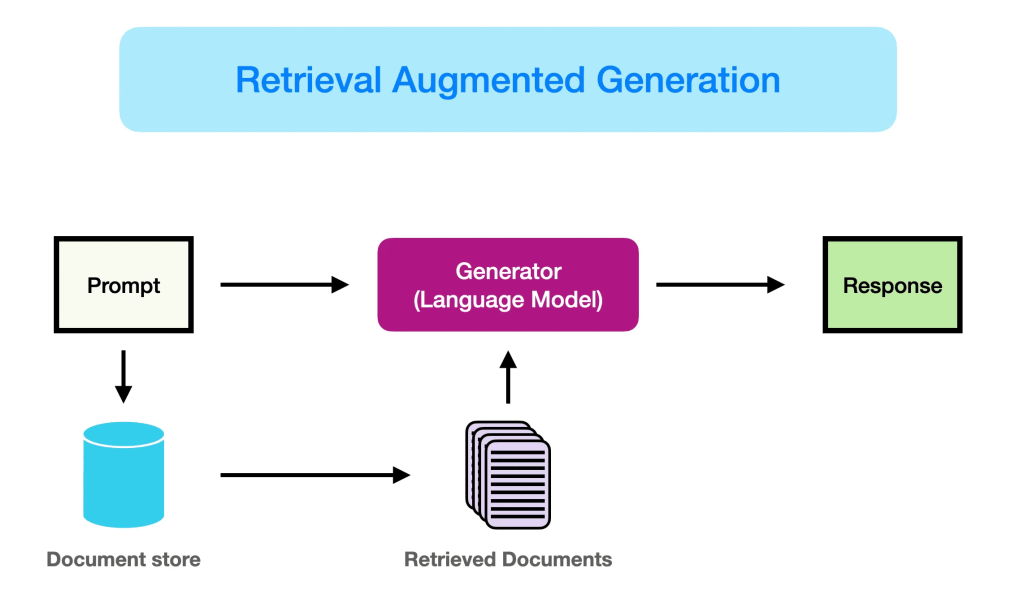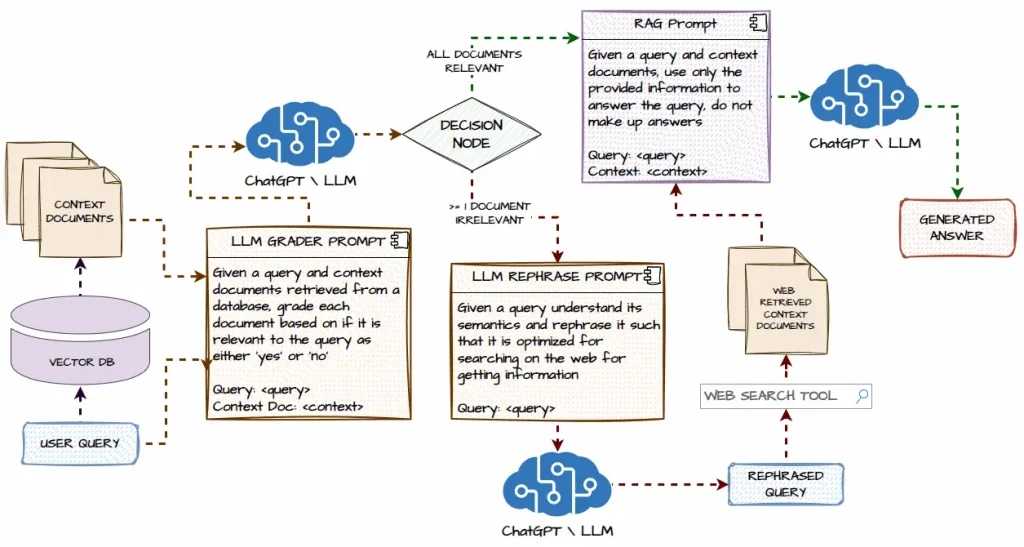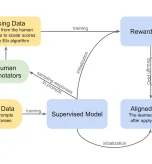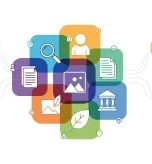In our previous post, we explored how tools enable AI agents to take action in the real world—sending emails, updating databases, triggering workflows. But here’s an interesting question: what happens when your AI doesn’t need to take action, but instead needs access to the right information?
This scenario is incredibly common in enterprise environments. Think about all the knowledge trapped in your organization:
- Internal documentation scattered across different teams and platforms
- Policy documents that were written years ago and buried in shared drives
- Customer insights hidden in CRM notes and support tickets
- Important context sitting in dashboards, emails, and meeting transcripts
In these situations, traditional tools won’t help. Your AI doesn’t need to send an email or create a ticket—it needs to think with your data. It needs to understand what your organization knows and use that knowledge to provide accurate, contextual responses.
That’s exactly where RAG comes in, and today we’re going to explore not just what RAG is, but how it’s evolving into something much more powerful in the age of agentic AI.

Agentic RAG image is from GPTbots
Understanding RAG: The Foundation
RAG stands for Retrieval-Augmented Generation, and it’s become one of the most important techniques in enterprise AI. Here’s the core concept: instead of relying solely on what an AI model learned during training, RAG allows it to retrieve relevant information from your organization’s data right before generating a response.
Think of it this way: traditional AI models are like incredibly knowledgeable consultants who can only work with what they memorized in school. RAG-enabled models are like those same consultants, but now they can access your company’s entire knowledge base while they’re working on your specific problem.
Why can’t we just feed all our data directly to the AI model?
Great question. There are two main limitations:
- Context windows: Even the most advanced AI models can only process a limited amount of text at once
- Information overload: When you give a model too much irrelevant information, it actually performs worse—like trying to find a specific fact in a 500-page document when you only need one paragraph
RAG solves both problems by being selective about what information gets retrieved and when.
How RAG Works in Practice
Let’s break down the RAG process step by step:
1. Data Preparation Your organizational knowledge—documents, emails, wiki pages, support tickets—gets processed and broken into smaller, manageable chunks. These chunks are then indexed in a way that makes them searchable.
2. Query Analysis When someone asks a question, the system analyzes what they’re looking for and determines what type of information would be most relevant.
3. Intelligent Retrieval The system searches through your indexed knowledge base and pulls the most relevant chunks of information related to the query.
4. Contextual Generation The AI model receives both the original question and the retrieved context, then generates a response that’s grounded in your actual organizational knowledge.
5. Grounded Output The result is an answer that’s not just generally correct, but specifically accurate for your organization and situation.
Why RAG Has Become Essential for Enterprise AI
Here’s a statistic that might surprise you: approximately 70% of enterprise AI applications use some form of RAG. That’s not a coincidence—it’s because RAG solves several critical challenges that organizations face when implementing AI:
Keeping Knowledge Current Your business knowledge changes constantly. RAG allows AI systems to work with up-to-date information without requiring expensive model retraining.
Cost and Speed Efficiency Training custom AI models is expensive and time-consuming. RAG provides a faster, more economical way to make AI systems domain-specific.
Control and Governance With RAG, you maintain control over what information the AI can access and how it uses that information. This is crucial for compliance and risk management.
Transparency and Traceability Because RAG systems can show exactly which documents or data sources informed a particular response, they provide the audit trails that enterprises need.
Flexibility Across Data Types RAG works well with both unstructured data (like documents and emails) and semi-structured data (like database records and dashboard information).
Instead of asking “How do we teach the AI everything we know?” organizations started asking “How do we help the AI find what it needs to know?” RAG provided the answer.
The Evolution: From RAG to Agentic RAG
RAG was revolutionary when it emerged, and it solved countless problems for enterprise AI applications. But as we’ve moved deeper into the era of agentic systems, a limitation has become apparent.
Traditional RAG follows a simple pattern:
- One query comes in
- One retrieval happens
- One response gets generated
This works beautifully for straightforward questions like “What’s our vacation policy?” or “Who should I contact about IT support?”
But real-world enterprise workflows are rarely that simple.
Enter Agentic RAG: Retrieval as a Dynamic Process
Let’s imagine you’re building an AI assistant to help your sales team with deal preparation. In a single interaction, that assistant might need to:
- Pull the prospect’s complete interaction history from your CRM
- Retrieve current pricing information for their market segment
- Look up relevant case studies from similar deals
- Reference legal terms and compliance requirements for their region
- Find successful proposal templates from past wins
- Cross-check competitive intelligence
- Verify product availability and delivery timelines
In traditional RAG, you’d have to anticipate all these information needs upfront. In Agentic RAG, the system dynamically determines what information it needs as the task unfolds.
Here’s the key difference: Agentic RAG treats retrieval not as a preprocessing step, but as an ongoing capability that the agent can use strategically throughout its reasoning process.
The agent might:
- Start by retrieving basic customer information
- Realize it needs more context about their industry
- Retrieve relevant case studies
- Discover a potential compliance issue and fetch regulatory requirements
- Generate an initial proposal
- Retrieve competitive analysis to refine the approach
- Double-check facts before finalizing
How Agentic RAG Changes the Game

This evolution transforms RAG from a simple question-answering tool into something much more powerful:
Dynamic Learning During Tasks Instead of working with a fixed set of information, agentic systems can learn and adapt as they work through complex problems.
Reduced Hallucination Risk
When an agent encounters uncertainty, it can pause to retrieve additional context rather than guessing or making up information.
Handling Complex, Multi-Step Workflows Agentic RAG enables systems to tackle sophisticated business processes that require multiple rounds of information gathering and decision-making.
Bridging Reasoning and Knowledge The system can seamlessly move between abstract reasoning and concrete, grounded facts from your organization’s knowledge base.
RAG as a Special Kind of Tool
If you think about it, RAG is actually a sophisticated type of tool—but instead of triggering external actions, it enables the agent to access and process large volumes of organizational knowledge intelligently.
In practice, the most powerful agentic systems combine RAG with traditional tools and planning capabilities. An agent might use RAG to understand a customer’s situation, use API tools to check current inventory, use RAG again to find relevant product documentation, and then use email tools to send a personalized proposal.
This combination creates systems that are both knowledgeable and capable—they know what your organization knows, and they can act on that knowledge.
Implementation Considerations: When and How
As powerful as Agentic RAG is, it’s important to recognize that not every use case needs this level of sophistication. The key is understanding when the complexity is justified:
Simple Q&A scenarios might work perfectly well with traditional RAG Complex advisory tasks often benefit from the dynamic retrieval capabilities of Agentic RAG Multi-step workflows that require ongoing context gathering are natural fits for agentic approaches
The decision isn’t just technical—it’s about matching the complexity of your solution to the complexity of your problem.
Looking Forward: The Knowledge-Action Bridge
What’s exciting about Agentic RAG is how it bridges two previously separate capabilities: knowledge management and task execution. Organizations no longer have to choose between AI that knows things and AI that does things—they can have systems that know what they need to know in order to do what they need to do.
This evolution is particularly powerful because it mirrors how human experts work. When you’re solving a complex problem, you don’t gather all possible information upfront. You start with what you know, identify what you need to learn, seek out that information, and use those insights to inform your next steps.
Agentic RAG gives AI systems this same kind of flexible, goal-oriented approach to information gathering.
The Broader Context: RAG in Your AI Strategy
As you think about implementing agentic AI in your organization, RAG capabilities—whether traditional or agentic—will likely play a central role. The question isn’t whether you’ll need RAG, but what kind of RAG architecture will best serve your specific use cases.
Consider starting with simpler RAG implementations for well-defined knowledge management needs, then evolving toward agentic approaches as you tackle more complex, multi-step workflows.
The organizations that get this right will have AI systems that don’t just automate tasks—they intelligently combine organizational knowledge with real-world action to solve problems that would be difficult or impossible to tackle with either capability alone.
Ready to Explore What’s Possible with Your Data?
If you’re reading this and thinking about all the knowledge trapped in your organization’s systems, you’re asking exactly the right questions. Whether you’re dealing with simple knowledge management challenges or complex workflows that require dynamic information gathering, understanding how RAG fits into your agentic AI strategy is crucial.
The key is starting with your specific information challenges: What knowledge do your teams need but struggle to find? What decisions require context from multiple sources? What workflows would be more effective if your AI could access the right information at the right time?
We’d love to help you think through how RAG—traditional or agentic—might unlock value in your specific situation. Contact us to explore how your organization’s knowledge assets could become a competitive advantage through thoughtful AI implementation.
Sometimes the most valuable insights come from understanding not just what your AI can do, but what it needs to know in order to do it well.
In our next post, we’ll explore the Model Context Protocol (MCP) and how it’s changing the way AI systems access and share information across different platforms and tools.






